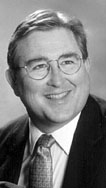The Vagabond remembers driving over the old Hokes Bluff Ferry years ago and got to thinking about the different ferries that used to operate in Etowah County.
The first ferryboat operated across the Coosa River in Gadsden was known as Walker Ferry, later known as the Ewing Ferry.
The landing was on the west bank of the river at the foot of what is now known as Coosa Street and was located on the original stage line and mail routes from Jacksonville to Huntsville.
Stages passed through Double Springs (the original name for Gadsden) and delivered mail to postmaster Gabriel Hughes at his home, which used to be located at what is now Third Street and Tuscaloosa Avenue.
When the town was moved up on the bluff and re-named Gadsden, a ferry was established at the foot of what is now Broad Street and Lafferty’s Landing (later known as the Gadsden Wharf). The location served six stage lines that came through from Rome and Jacksonville to Huntsville and later to Tuscaloosa.
The Gadsden ferry was one of the oldest on the river. Stages stopped for refreshment for men and animals at the Turrentine Inn, the first hotel in town, and what became known as Emma Sansom Park. There was no deed to this property, so the city acquired it by adverse possession and common consent.
The famous Civil War hero John Wisdom, who was also a mail carrier for the Confederate government, was believed to have been the first ferryman for the Gadsden ferry. Also, Emma Sansom and her husband owned and operated the old Gilbert Ferry for a while.
Before the war, Wisdom built the Wisdom Hotel at Locust and Third Streets. He advertised that the hotel was only 300 yards from the ferry.
Wisdom retired from business after reaching old age and lived on his 300-acre farm plantation at Wisdom’s Cross Roads in Hokes Bluff.
Dick Lindsay was the ferryman for many years, up until the building of the L&N Bridge in 1888, when it was used for wagon traffic. He lived on the bluff on the north of Locust Street at the end of the bridge.
For a long time, the two ferries did a good business.
In those days all ferries charged for crossing, but they were free when the county operated them.
During the prohibition era and in the early 1880s, several blind tigers, or outlaws, were established on the east bank of the Coosa where the two ferry roads converged, creating a bad section of the county. Guards were hired to escort women and children through the area.
According to Mr. Will I. Martin, it was the habit of travelers at night to shout for the ferryman to come after them, if he happened to be on the opposite shore. The shout could be heard all over town.
The Hokes Bluff, Wagnon, Croft, Fitts, Gilbert, Lister, Fowler and McCartney ferries were es-tablished when Etowah County was first being settled.
These old ferries brought out a lazy feeling around summer, when one would doze off in the early afternoon holding a fishing pole. It was living just like Huckleberry Finn!
Back in 1963, assistant county engineer Paul Ryan said, “those ferries are the only means of transportation for people who live near the banks of the river, unless they travel between 15 and 30 miles to Leesburg or Gadsden to cross the Coosa. In many instances, a family lives on one side of the river and works a crop on the other side. It would take them a long time to get to their fields if they had to drive it. By using a ferry, they can make the trip in a matter of minutes.”
At that time, the ferry nearest the City of Gadsden was the Hokes Bluff Ferry, which served Hokes Bluff residents on one side and the people of Tidmore Bend on the other.
Further up the river was the Fitts Ferry, which crossed from Alford’s Bend to a landing near Gaston School.
A few miles from that location was the Wagnon Ferry, which ran from near Ballplay on one side and Coats Bend on the other.
About 15 miles up the Coosa from Gadsden is the Croft Ferry, located near the Etowah-Cherokee county lines. The ferry served a portion of Coats Bend and the Ball Play-Piney Woods area.
The ferries were operated from sunup to sundown without charge to passengers.
Anytime after sundown, arrangements for a crossing had to be made with the men who operated the ferries, and there was a small charge for the extra service.
For years, the water vehicles were operated by cable alone. Around the late 1950’s, the county added motors on some of them.
When the Alabama Power Company began its development of the Coosa River and constructed the Weiss Dam near Leesburg, Etowah County was unable to operate the ferries properly. There was trouble due to the fluctuation of the water level when the power was changed at the dam.
When the water was cut off at the power house, the river became too low to operate the ferries. When the water was turned on, the river became too high to operate the ferries.These frequent changes in the water level increased the cost of maintenance of the ferries.
At that time, the county was trying to work out a plan to get bridges, or at least one centrally located on the Coosa between Gadsden and Leesburg, to take the place of the ferries.
That finally happened when the Appalachian Highway and bridge were built around the 1970’s, and the Hokes Bluff Ferry stayed in operation for many years.





